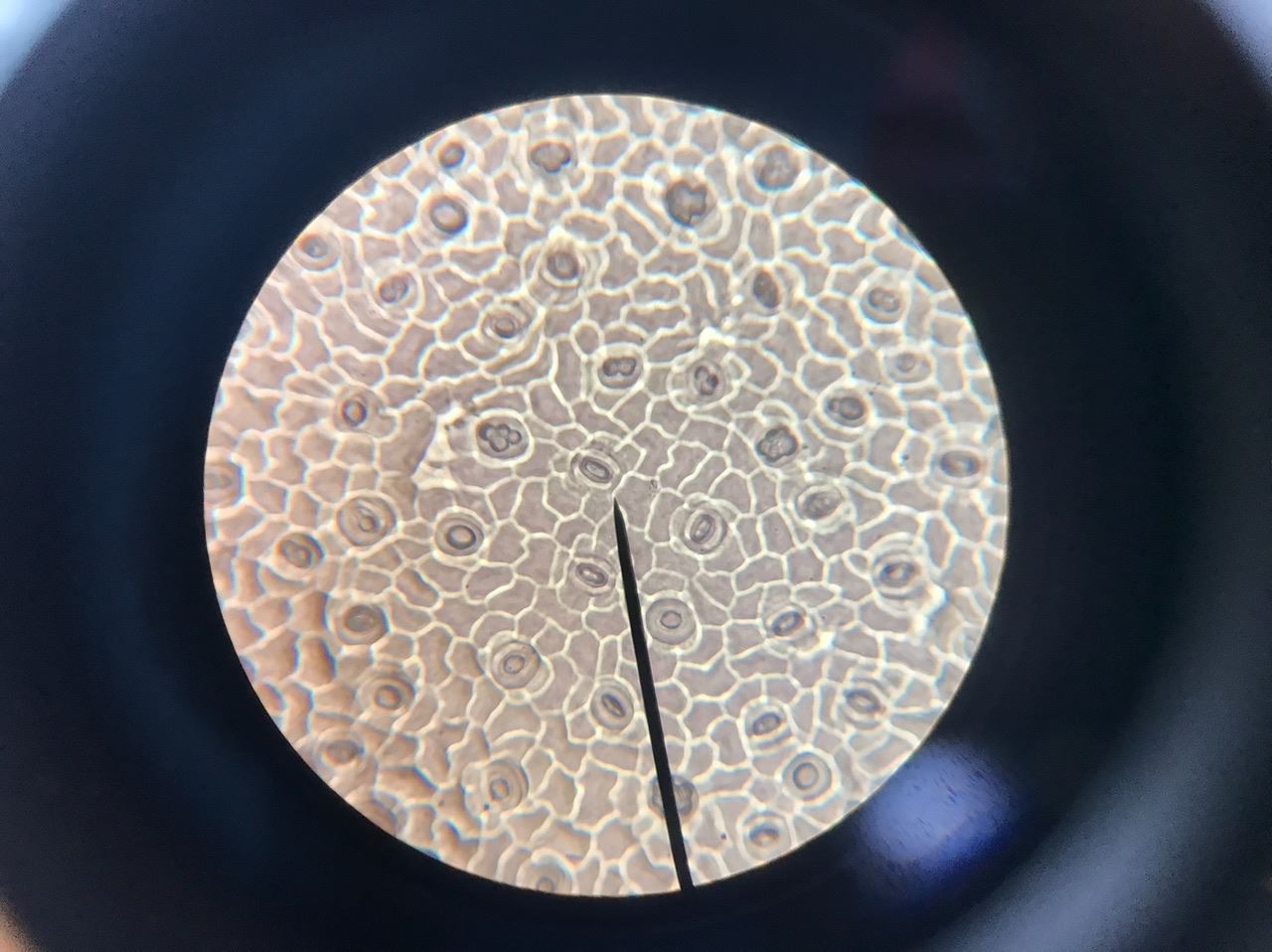 Biologist Nathan Mineo
Biologist Nathan Mineo
Did You Know...?
Trees Make it Rain
Written by Nathan Mineo
Reprinted from the 2022 Cape Ann Vernal Pond Team Newsletter
Photograph by Cheryl Briscoe
Did You Know that trees make it rain? Not only do they make it rain, they attract the rain as well. Let’s dig into this a bit more.
If you’re like me you’ve likely found yourself awake at 3am pondering ridiculous questions like, “how does water travel from the roots up the trunk of a tree into the leaves?” We all know it happens, but most people just accept it as some unspoken truth about the world. But the water is defying gravity! Well, as it turns out, trees are just like straws. Just like a straw moves water up from a glass to a mouth, trees move water up from the ground into the atmosphere. The process is called transpiration. Here’s a very basic description of how transpiration works: Photosynthesis takes place inside the leaves, using up carbon dioxide and producing oxygen. Trees need to keep replenishing the carbon dioxide so they can continue to photosynthesize, and they also need to get rid of the oxygen being produced. Tiny pores on the bottom of the leaves, called stomata, open up to allow for these gases to enter and exit the leaves respectively. Evaporated water in the leaves also exits the stomata. The longer the stomata are open, the more carbon dioxide goes in, and the more water evaporates out of the leaves. As water is lost from the leaves, this creates space for more water, which is drawn in from the branches, which pulls water up the trunk. Essentially, the evaporation of water from the leaves creates a vacuum similar to the vacuum created when a mouth draws water up a straw. So, trees are basically giant straws and the atmosphere is like a giant mouth sucking water out of the ground through the trees.
The majority of the water vapor in the atmosphere has been evaporated from the oceans (around 90%), but researchers estimate that the amount of water vapor in the atmosphere that comes off land surfaces is mostly from transpiration. Measuring the amount of transpiration is difficult and there is disagreement on the best method, so there are wide ranges of estimates. Transpiration is responsible for 35% to as much as 90% of the water entering the atmosphere from land surfaces. Most agree that it is at least 65%, with more recent estimates in the 80-90% range. Furthermore, trees release volatile organic compounds (VOCs) that aid in the formation of clouds. The water vapor and VOCs generate clouds, and then rain. And that’s how trees make rain.
But wait, there’s more! Remember I said trees attract rain as well. There is a theory called the Biotic Pump theory that explains why water evaporated from the ocean moves inland. The basic idea here is that transpired water from coastal forests creates an area of low pressure over the forests. Moist air from over the ocean then flows into those low-pressure troughs bringing with it evaporated water from the ocean. The bigger and more contiguous the forest, the further inland that moist ocean air travels.
In short, trees are super important in the water cycle, at least at the regional level, and likely the global level. Disruptions in rainfall is just one more item on the long list of terrible things that result from deforestation and fragmentation. Save the trees. We need them more than we need the land they grow upon.


